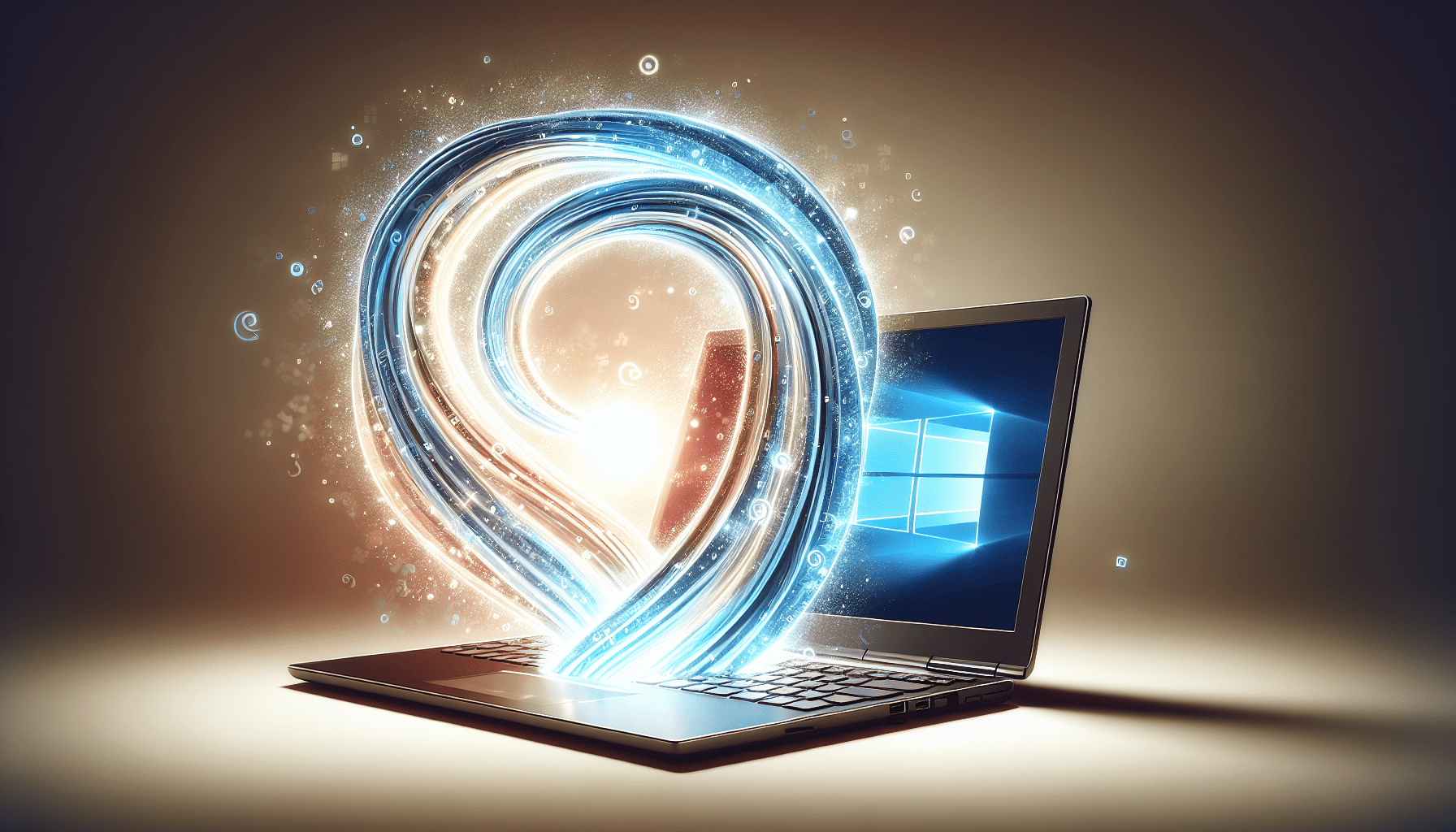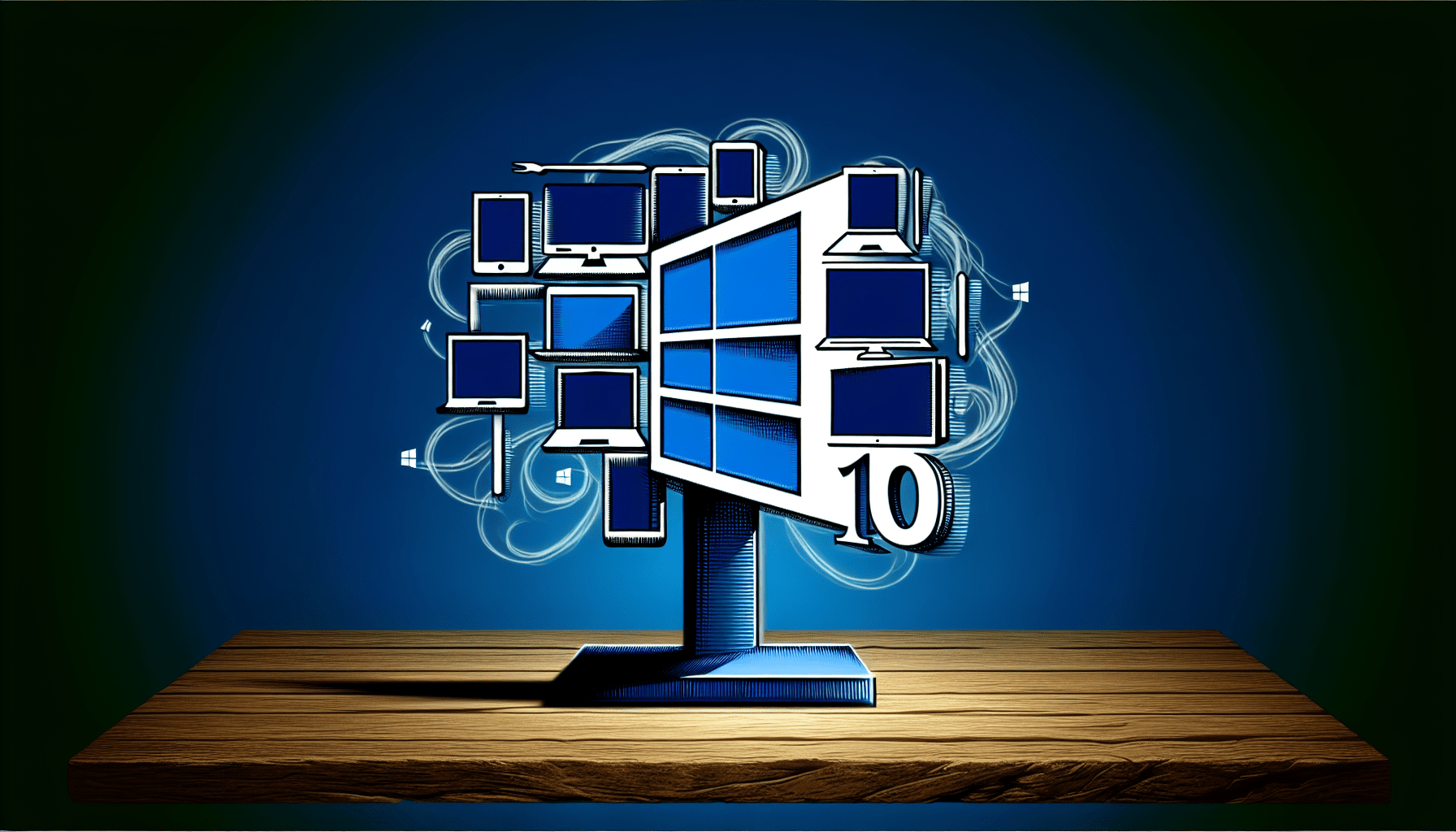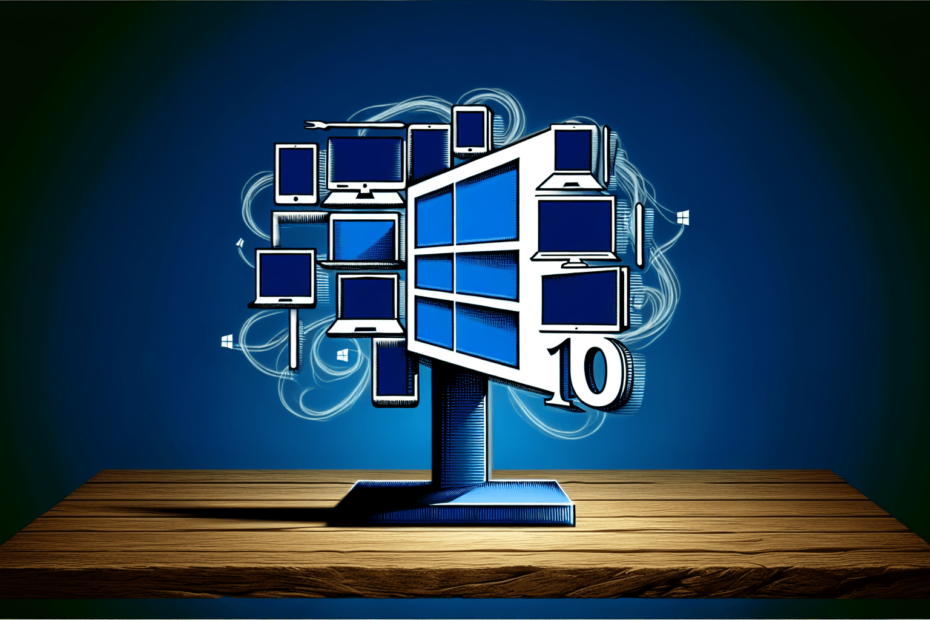







If you’re wondering whether your laptop is compatible with Windows 10, you’re not alone. With the continuous advancements in technology, it can be difficult to keep up with the latest operating system requirements. However, fret not! This article will provide you with all the information you need to determine if your laptop is compatible with Windows 10. From system requirements to compatibility checks, we’ve got you covered. So, let’s dive in and find out if Windows 10 is compatible with your laptop!
System Requirements
Processor
The processor is one of the most important components of your laptop when it comes to compatibility with Windows 10. To ensure a smooth performance, your laptop should have a processor that meets the minimum system requirements for Windows 10. These requirements include a 1 GHz or faster processor with at least 2 or more cores. If your laptop has a slower processor or does not meet the core requirement, it may not be compatible with Windows 10.
RAM
Your laptop’s Random Access Memory (RAM) is another crucial factor for Windows 10 compatibility. The minimum requirement for RAM in order to run Windows 10 is 1 gigabyte (GB) for 32-bit or 2 GB for 64-bit versions. However, it is recommended to have at least 4 GB of RAM for optimal performance. Insufficient RAM may result in slower system speed and decreased multitasking capabilities.
Hard Drive Space
Windows 10 requires a certain amount of hard drive space to install and operate smoothly. The minimum requirement for the 32-bit version of Windows 10 is 16 GB, while the 64-bit version requires 20 GB. However, it is advisable to have at least 32 GB or more of free space on your laptop’s hard drive to accommodate future updates, applications, and personal files.
Graphics Card
In terms of graphics card compatibility, your laptop should have a graphics card that supports DirectX 9 or later with a WDDM 1.0 driver. This ensures that your laptop can handle the graphical demands of Windows 10 and its various features. If your laptop’s graphics card does not meet these requirements, you may experience issues such as lowered visual performance or the inability to utilize certain features.
Display Resolution
The display resolution of your laptop is an important consideration for Windows 10 compatibility. Windows 10 is optimized for a variety of screen resolutions, from lower resolutions like 800 x 600 pixels to higher resolutions like 1920 x 1080 pixels and beyond. However, it is recommended to have a display resolution of at least 1366 x 768 pixels for an optimal user experience. If your laptop’s display resolution is lower than this, certain features and applications may not be displayed properly.
Finding System Information
Checking Processor
To check the processor of your laptop, you can follow these steps:
- Right-click on the Start button and select “System” from the dropdown menu.
- Under the “Device specifications” section, you will find information about your laptop’s processor, including the manufacturer, model, and speed.
Checking RAM
To check the amount of RAM on your laptop, you can follow these steps:
- Press the Windows key + R on your keyboard to open the Run dialog box.
- Type “msinfo32” (without the quotes) and press Enter.
- In the System Information window, under the “System Summary” section, you will find information about your laptop’s RAM, including the total physical memory installed.
Checking Hard Drive Space
To check the available hard drive space on your laptop, you can follow these steps:
- Open File Explorer by pressing the Windows key + E on your keyboard.
- In the left-hand pane, you will see a list of drives. Right-click on the drive where Windows is installed (usually the C: drive) and select “Properties” from the dropdown menu.
- In the General tab of the Properties window, you will find information about the used and free space on your laptop’s hard drive.
Checking Graphics Card
To check the graphics card on your laptop, you can follow these steps:
- Right-click on the Start button and select “Device Manager” from the dropdown menu.
- In the Device Manager window, expand the “Display adapters” category.
- You will see the name of your laptop’s graphics card listed under this category.
Checking Display Resolution
To check the display resolution of your laptop, you can follow these steps:
- Right-click on the desktop and select “Display settings” from the dropdown menu.
- In the Display settings window, you will see the current resolution of your laptop’s display under the “Resolution” section.

Compatibility Check Tool
Downloading the Tool
To determine the compatibility of your laptop with Windows 10, Microsoft provides a compatibility check tool called the “Get Windows 10 app.” You can download this tool from the Microsoft website or use the built-in tool if it is available on your laptop.
Running the Tool
Once you have downloaded the compatibility check tool, you can run it by following these steps:
- Locate the downloaded file and double-click on it to launch the tool.
- The tool will perform a system scan to check your laptop’s hardware and software compatibility with Windows 10.
- After the scan is complete, the tool will display a report indicating any potential compatibility issues that may arise during the upgrade process.
Interpreting Results
The compatibility check tool will provide you with a detailed report on the compatibility of your laptop with Windows 10. It will highlight any hardware or software components that may have compatibility issues and provide recommendations for resolving these issues. It is important to review the report carefully and take necessary actions before proceeding with the Windows 10 upgrade.
Manufacturer Support
Checking Manufacturer’s Website
If you are unsure about the compatibility of your laptop with Windows 10, you can visit the manufacturer’s website for support and information. Most laptop manufacturers have a dedicated support section on their websites where you can find detailed specifications, driver updates, and compatibility information for their products. By checking the manufacturer’s website, you can ensure that you have the most up-to-date information regarding your laptop’s compatibility with Windows 10.
Contacting Customer Support
If you are unable to find the necessary information on the manufacturer’s website or need further clarification, it is recommended to contact the customer support of your laptop’s manufacturer. They will be able to provide you with accurate and specific information regarding Windows 10 compatibility and any potential issues that may arise during the upgrade process. Customer support representatives can guide you through the necessary steps to ensure a smooth transition to Windows 10.

Driver Compatibility
Checking Existing Drivers
Before upgrading to Windows 10, it is important to check if your laptop’s existing drivers are compatible with the new operating system. Drivers are software programs that allow your hardware and operating system to communicate effectively. Incompatibility between drivers and Windows 10 can lead to issues such as malfunctioning devices or decreased performance. To check your existing drivers, you can follow these steps:
- Open Device Manager by right-clicking on the Start button and selecting “Device Manager” from the dropdown menu.
- Expand each category and look for any drivers with a yellow exclamation mark icon or any devices that are not functioning properly. These are indications of potential driver compatibility issues.
Updating Drivers
If you find any incompatible or outdated drivers, it is crucial to update them before upgrading to Windows 10. Updating drivers ensures that your laptop’s hardware can function optimally with the new operating system. You can update drivers by following these steps:
- Visit the manufacturer’s website for your laptop or the specific hardware component that requires an update.
- Locate the latest driver version for your hardware and download it.
- Run the downloaded driver installer and follow the on-screen instructions to install the updated driver.
- Repeat this process for each driver that requires an update.
Hardware Compatibility
Checking Components’ Compatibility
In addition to checking the compatibility of your laptop’s individual hardware components, it is important to assess the overall compatibility of your laptop’s hardware with Windows 10. Some laptops may have proprietary hardware or specialized components that may not be fully compatible with a new operating system. To ensure hardware compatibility, you can consult the laptop’s manufacturer website or contact customer support for detailed information.
Finding Compatible Upgrades
If certain hardware components of your laptop are not compatible with Windows 10, you may consider upgrading them to ensure a smooth transition. Compatible upgrades can improve the performance and functionality of your laptop and provide a better user experience with Windows 10. When considering hardware upgrades, it is crucial to research compatibility and ensure that the new components are supported by both Windows 10 and your laptop’s manufacturer.
Software Compatibility
Checking Installed Applications
Before upgrading to Windows 10, it is important to check the compatibility of your installed applications. Some older or specialized software may not work properly with the new operating system, leading to compatibility issues or functionality limitations. To check the compatibility of your installed applications, you can follow these steps:
- Open the Windows Start menu and click on “Settings.”
- In the Settings window, click on “Apps.”
- Under the “Apps & features” section, you will see a list of installed applications.
- Review the list and research the compatibility of each application with Windows 10. You can visit the developer’s website or utilize compatibility resources provided by Microsoft.
Checking Compatibility of Essential Software
Essential software refers to critical programs that you rely on for productivity or that are required for specific tasks. It is crucial to ensure that essential software is compatible with Windows 10. If any of your essential software is not supported, it may be necessary to find alternative solutions or upgrade to newer versions that are compatible with Windows 10. Make sure to research compatibility requirements and consider the impact on your workflow before upgrading.
Windows 10 Edition Compatibility
Different Editions of Windows 10
Windows 10 comes in several different editions, each tailored to different user needs and scenarios. These editions include Windows 10 Home, Windows 10 Pro, Windows 10 Enterprise, and more. It is important to choose the right edition of Windows 10 that suits your requirements and aligns with the capabilities of your laptop. Windows 10 Home is suitable for most everyday users, while Windows 10 Pro offers additional features and functionality for business and advanced users.
Choosing the Right Edition
To choose the right edition of Windows 10 for your laptop, consider your specific needs and budget. Evaluate the features and capabilities offered by each edition and determine which ones are essential for your usage. If you require advanced security features, remote desktop access, or virtualization capabilities, Windows 10 Pro may be the right choice. However, if you are a casual user and do not need the additional features, Windows 10 Home will likely meet your needs.
Upgrade Process
Backup Your Data
Before proceeding with the upgrade to Windows 10, it is crucial to backup your data to ensure its safety. Upgrading to a new operating system can occasionally lead to data loss or corruption, so having a backup ensures that you can restore your important files if any issues arise. You can backup your data by copying it to an external storage device or utilizing cloud storage services.
Creating a Windows 10 Installation Media
To perform the upgrade to Windows 10, you will need a Windows 10 installation media. This can be created using the Windows 10 Media Creation Tool, which is available for free download from the Microsoft website. The installation media can be created on a USB flash drive or burned to a DVD. Make sure to follow the instructions provided by Microsoft to create the installation media correctly.
Performing the Upgrade
Once you have backed up your data and created the Windows 10 installation media, you are ready to perform the upgrade. Insert the installation media into your laptop and follow the on-screen instructions to begin the installation process. It is advisable to connect your laptop to a power source and ensure a stable internet connection during the upgrade. The installation process may take some time, so be patient and avoid interrupting the process.
Common Compatibility Issues
Driver Incompatibility
One common compatibility issue when upgrading to Windows 10 is driver incompatibility. If your laptop’s drivers are not compatible with Windows 10, you may experience issues such as malfunctioning devices or decreased performance. To mitigate this issue, make sure to check and update your drivers before performing the upgrade. If you encounter driver-related issues after upgrading, visit the manufacturer’s website for your laptop or the specific hardware component to download and install the latest compatible drivers.
Software Incompatibility
Another common compatibility issue is software incompatibility. Older or specialized software may not be compatible with Windows 10, leading to issues or functionality limitations. Before upgrading, check the compatibility of your installed applications and essential software with Windows 10. If any software is not compatible, research alternative solutions or consider upgrading to newer versions that are compatible with Windows 10.
Hardware Limitations
Certain hardware limitations may impact the compatibility of your laptop with Windows 10. Proprietary or specialized hardware components may not be fully supported by a new operating system, leading to compatibility issues. Before upgrading, consult the manufacturer’s website or contact customer support to ensure that your laptop’s hardware is compatible with Windows 10. If certain components are not compatible, you may consider upgrading them to ensure a smooth transition to Windows 10.




